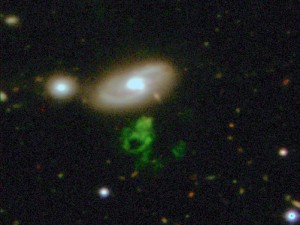
What does it mean to think scientifically?
If you asked me this question when I first moved back to New York three years ago, I’m quite positive I would have said something like, “What do I know? I’m not a scientist,” and pointed the questioner in the direction of the nearest pocket-protecting nerd in the vicinity.
Science was never one of my best subjects (I can still remember my high school physics teacher, Dr. Moroni, speeding out of the parking lot in his Pontiac Aztek to avoid telling me that I had failed the final exam). In fact, it was the very last thing I thought I would get involved in upon settling into my artsy Brooklyn neighborhood in 2008 to write my first novel. However, since my discovery of citizen science through the Earthwatch Institute and WildMetro, I now consider myself an unofficial member of the super hip NYC science community, whose events on such sexy topics as the dark matter and neuroscience are more likely to be full of trendy 30-somethings sipping beer out of plastic cups than pale, lab coat wearing individuals with microscope indentations around their eyes.
To begin a journey into the realm of the scientific mind, let’s go back in time about 177 years ago, when the word “scientist” first appeared in the Oxford English Dictionary. Before this transitional moment in human history, people we would now think of as scientists were called “natural philosophers” – those who studied the workings of nature. Some of these philosophers, such as Anton van Leeuwenhoek and Michael Faraday, had little formal training in their chosen subjects, but came to learn about science through a personal desire to come up with answers to their individual questions about the universe. Science was less a profession or an academic field as it was a way of thinking about the world and understanding its mysteries through direct observation.
In some ways, the study of science was more accessible two hundred years ago than it is in today’s science classrooms, where students are typically tested on their ability to remember the answers to hundreds of questions that have already been answered, rather than being encouraged to look up at the sky or at a blade of grass and come up with questions of their own.
Which brings us to one of my favorite science quotes (by Nobel prize-winning physicist and lifelong gardener William Lawrence Bragg): “The important thing in science is not so much to obtain new facts as to discover new ways of thinking about them.”
What does it mean to discover new ways of thinking? In my own adventures in citizen science, I have come to believe the most important factor to be engagement – learning through doing, questioning and direct experience. In fact, many scientists will tell you that science tends to raise more questions than answers – it is a very humbling activity, and is best done in community, where the findings of one person is built upon the findings of another, and so forth.
Citizens have been participating in this process for millennia through direct experience by living close to the land. Pre-Columbian farmers living in the Americas thousands of years ago were early geneticists, creating the grain we know today as corn through the breeding and domestication of wild, barely edible grasses. The Inuit people of the Canadian Arctic were extremely creative engineers, able to survive in subfreezing temperatures by making use of snow as a natural form of insulation. And, even in modern times, some of the most exciting scientific discoveries are coming from individuals with no formal training. In 2007, a Dutch schoolteacher discovered a previously unknown astronomical object while participating in a citizen science project called Galaxy Zoo, and two months ago, a ten-year old girl from Canada became the youngest person to discover a supernova.
Of course, as with any kind of thinking, there are rules by which to guide oneself. In scientific thinking, the most important rule might be to adopt a stance of “critical curiosity.” Not quite skepticism, which might lead towards a bias against new discoveries, and a far cry from either denial or naivety. Such a critical yet open attitude is necessary for cultivating a scientific mind. And, also an attitude that can best be found in beginners, who are less likely to have their egos at stake than career-hardened scientists with reputations to uphold.
Science thrives upon criticism, debate and new ideas, and this is exactly the kind of thinking that challenges those who confuse science with their own personal preference. It is not difficult to argue with someone who doesn’t believe evolution or global warming because the research hasn’t been come up with convincing evidence, but because it is so hard to communicate that evidence in a way that is meaningful to peoples’ lives. Instead of adopting attitudes of frustration and disdain when meeting with skeptics, scientists should say, “You’re right. We still have a lot to figure out about all this. Why don’t you join me on some research, and we can figure this out together?”
The job of science is to deliver reality back to us, not the other way around, and instead of trying to convince people to believe what they say, I would challenge scientists to engage citizens in the process of critical curiosity through thinking scientifically. Scientific facts are being disproven and proven again all the time. The most important thing is not to get the answers right but to be willing to ask the questions, even if the results are not quite what you expected.
